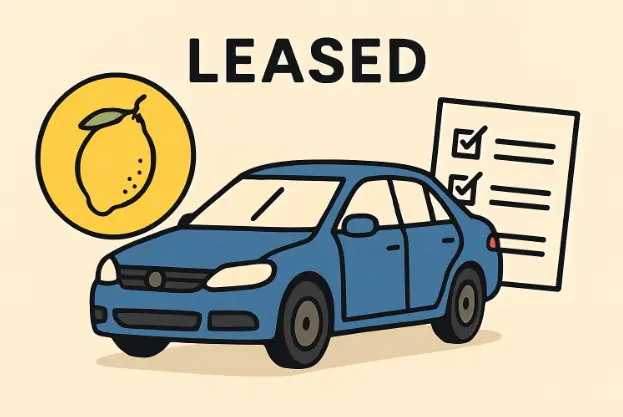Understand Natasha’s Law: What You Need to Know
Natasha’s Law came into effect in 2021. It changed how food is labelled in the UK. Many businesses didn’t see it coming. Now, they must act fast to keep up. This law matters to anyone selling food that’s prepacked and made on-site.
Why? Because one mistake can lead to serious harm. Natasha’s story is proof of that.
What Is Natasha’s Law?
The law is named after Natasha Ednan-Laperouse. She was 15 when she died after eating a baguette that contained sesame. The label didn’t mention the allergen. Her death led to public outcry. The government responded.
Now, the law makes it mandatory to label certain foods with full ingredient lists. That includes allergen information. It’s not optional. It’s not just for supermarkets. Even small cafés must comply.
Background of the Law
Natasha bought a sandwich at the airport. She had a sesame allergy. The label didn’t list sesame. No one warned her. She boarded her flight. Halfway through, she had a severe allergic reaction. She died before she could be saved.
This could’ve been avoided. Labels matter. That’s why her parents campaigned for change. The law now bears her name.
When Did It Come into Effect?
The law took effect on 1 October 2021. It applies to food businesses in England, Wales and Northern Ireland. Scotland passed similar measures.
If a business sells food that’s prepared and packed on-site, it must follow the rules. This includes delis, bakeries, sandwich shops and even schools.
Who Needs to Comply?
Any business that sells food prepacked for direct sale (PPDS) needs to act. That means the food is packed on the same premises where it’s sold. It’s made before the customer orders it.
If someone picks it up from a shelf or display, and it’s sealed, it counts as PPDS. The rules apply.
Even if it’s a small café or a school canteen, the law still stands.
What Is PPDS Food?
PPDS stands for prepacked for direct sale. Think of a sandwich made and wrapped at a café. Or a salad boxed up in a supermarket fridge. If it’s packed before being selected by the customer, it’s PPDS.
Made-to-order food doesn’t count. Neither does food packed off-site. But anything packed in advance and sold in the same place needs a full label.
What Must Be Labelled?
Labels now need to be more than just names and prices. They must show:
- A full list of ingredients
- All 14 allergens clearly highlighted
- No hidden surprises
Mandatory Details on the Label
The label must match what’s inside. Every ingredient counts. Even if it’s a pinch of spice or a drop of oil. If it’s in the food, it goes on the label.
Allergens must stand out. Bold text, capital letters or colour is fine. As long as it’s easy to see.
How Should Allergens Be Highlighted?
This is where Food Allergen Training becomes crucial. Staff must know how to spot allergens. They must know how to label them. No guesswork. No shortcuts. One wrong word can put a life at risk.
Up next: how to put this law into action without messing it up.
How to Implement Natasha’s Law in Your Business
Understanding the law is one thing. Doing it right is another. Many get it wrong. A few steps help avoid fines and serious risks.
1. Identify PPDS Products
Start with the menu. Look at what’s packed before the sale. Sandwiches, wraps, boxed cakes or salads. If it’s packed on-site and sold on-site, it’s PPDS.
2. Review and Update Ingredients Lists
Get your recipes straight. Check every ingredient. Even the small ones. Don’t rely on memory. Check packaging, ask suppliers. Write it all down. Be exact.
3. Label Clearly and Legibly
Use labels that people can read. Big enough font. No clutter. Allergens must stand out. No need for fancy designs. Just keep it clear.
4. Train Staff
Every team member should know the rules. This is where Food Hygiene Courses help. They cover what matters. Handling food, knowing the law and avoiding mistakes.
5. Conduct Regular Checks
Things change. Recipes get updated. Suppliers switch brands. New staff come in. Check labels regularly. Make it routine. Stay on top of it.
Common Mistakes to Avoid
Even with good intentions, some things go wrong. Here’s what to watch out for:
- Missing ingredients
- Not updating labels when recipes change
- Using unclear allergen wording
- Poor staff training
- Labelling food that’s not PPDS and skipping what is
Double-check everything. One small slip can do real damage.
Why Natasha’s Law Matters
This isn’t about red tape. It’s about safety. Natasha’s Law protects people with allergies. It gives them confidence to buy food without fear.
Businesses that follow the law show they care. Not just about the rules but about customers. It builds trust. It avoids legal trouble. It saves lives.
Allergy incidents are on the rise. Clear labelling helps reduce risk. It’s not just good practice. It’s the law.
Resources and Support
Plenty of help is out there. Food Standards Agency (FSA) has guides. Local councils offer advice. Labelling companies provide ready-made tools.
Courses are available too. Online and in-person. Covering allergens, food safety and labelling.
Small businesses don’t have to figure it out alone. Use the support. Ask questions. Learn before mistakes happen.
Final Check: Key Things to Remember
- Natasha’s Law applies to PPDS food
- Labels must include full ingredients
- Allergens must be highlighted
- All food handlers need proper training
- Review labels often
- One missed detail can cost a life
No Room for Guesswork
Food allergies are serious. One bite can harm or even kill. Natasha’s Law came after a tragedy. It’s here to prevent another.
Businesses must take it seriously. It’s not about ticking boxes. It’s about keeping people safe.
Labelling right isn’t hard. But it takes care, time and the right know-how. With the right steps, it becomes habit. Customers feel safer. Staff feel more confident. Mistakes drop.
That’s what Natasha’s Law is for. Not paperwork. Not headlines. Just safe food for everyone.
Also Read-Why Selling Junk Cars for Cash Helps the Environment







